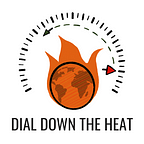Public Health & Climate Change
Climate change adds to natural and human-made health stressors that influence human health and disease in various ways. Intensifying existing health threats and aiding in the development of new health threats are the two major concerns. Age, economic resources, and location heavily influence the level of exposure to climate driven health impacts.
Prolonged droughts, intense floods, abnormal rainfall, longer and more intense heat waves and storms, and dangerous exposure to sun are proof that the weather affects human health in countless ways. Disease-carrying vectors have been observed to have larger ranges and are more resilient to weather changes. For these very reasons, climate change is a public health concern.
A recent international study in the Lancet mentions that more people will be exposed to extreme weather events over the next century than previously thought — “a potentially catastrophic risk to human health” that could undo 50 years of global health improvements and gains.
“It’s so important that people recognize that climate change is about our health. There are so many pathways through which climate impacts our health.”
— Dr. Jonathan Patz, Director of the Global Health Institute at the University of Wisconsin-Madison
As mentioned above, climate impacts such as heat, air pollution, extreme weather, vector-borne diseases, and decreasing access to safe water and food are the major “pathways” through which public health is affected. The health risks posed already disproportionately harm marginalized groups including people with disabilities, low-income families and individuals, communities living in coastal regions — and climate change is likely to deepen those disparities.
A quick look at how climate change affects public health — from National Geographic:
- Power outages in extreme weather could cripple hospitals and transportation systems when we need them most.
- Crop declines could lead to undernutrition, hunger, and higher food prices. More CO2 in the air could make staple crops like barley and soy less nutritious.
- Occupational hazards such as risk of heatstroke will rise, especially among farmers and construction workers. Labor could shift to dawn and dusk, times when more disease-carrying insects are out.
- Hotter days, more rain, and higher humidity will produce more ticks, which spread infectious diseases like Lyme disease. Ticks could be in much of the eastern U.S. by 2080.
- Trauma from floods, droughts, and heat waves can lead to mental health issues like anxiety, depression, and suicide.
- More heat can mean longer allergy seasons and more respiratory disease. More rain increases mold, fungi, and indoor air pollutants.
- Mosquito-borne dengue fever has increased 30-fold in the past 50 years. Three-quarters of those exposed so far live in the Asia-Pacific region.
- Senior citizens and poor children — especially those already afflicted with malaria, malnutrition, and diarrhea — tend to be most vulnerable to heat-related illnesses.
- Drought and chronic water shortages harm rural areas and 150 million city dwellers. If localities don’t adjust quickly, that number could be nearly a billion by 2050.
- Rising sea levels can threaten freshwater supplies for people living in low-lying areas. More severe storms can cause city sewage systems to overflow.
Doctors across the world have stepped up and continue to raise concern about public health risks due to climate change. Pandemics such as COVID-19 are likely to increase if the impacts of climate change are not taken seriously.
Reports indicate that doctors and nurses who have started discussing climate change with their patients have not had much pushback, but they think that may be because bringing climate change into the exam room is still very new.
Solutions for this complicated challenge are at work too. National health insurance in Benin has been expanded to cover diseases likeliest to increase as the world warms and sea levels rise. Programs in Phillipines are helping low-income residents manage weather-related risks with loans, hygiene education, and waste and water control. Meanwhile public health experts everywhere are calling for new measures to help people stay healthy despite floods, droughts, and heat waves.
